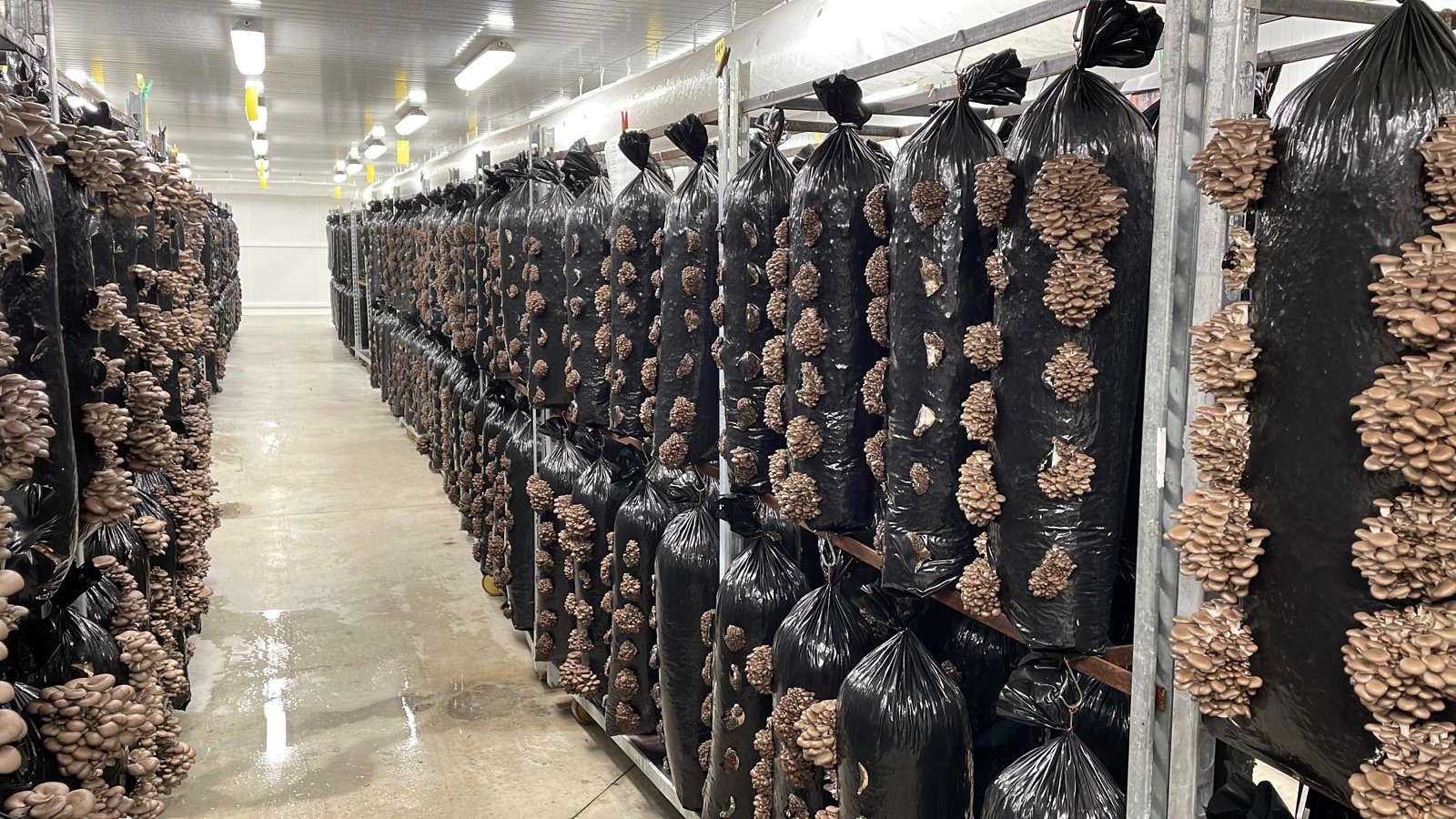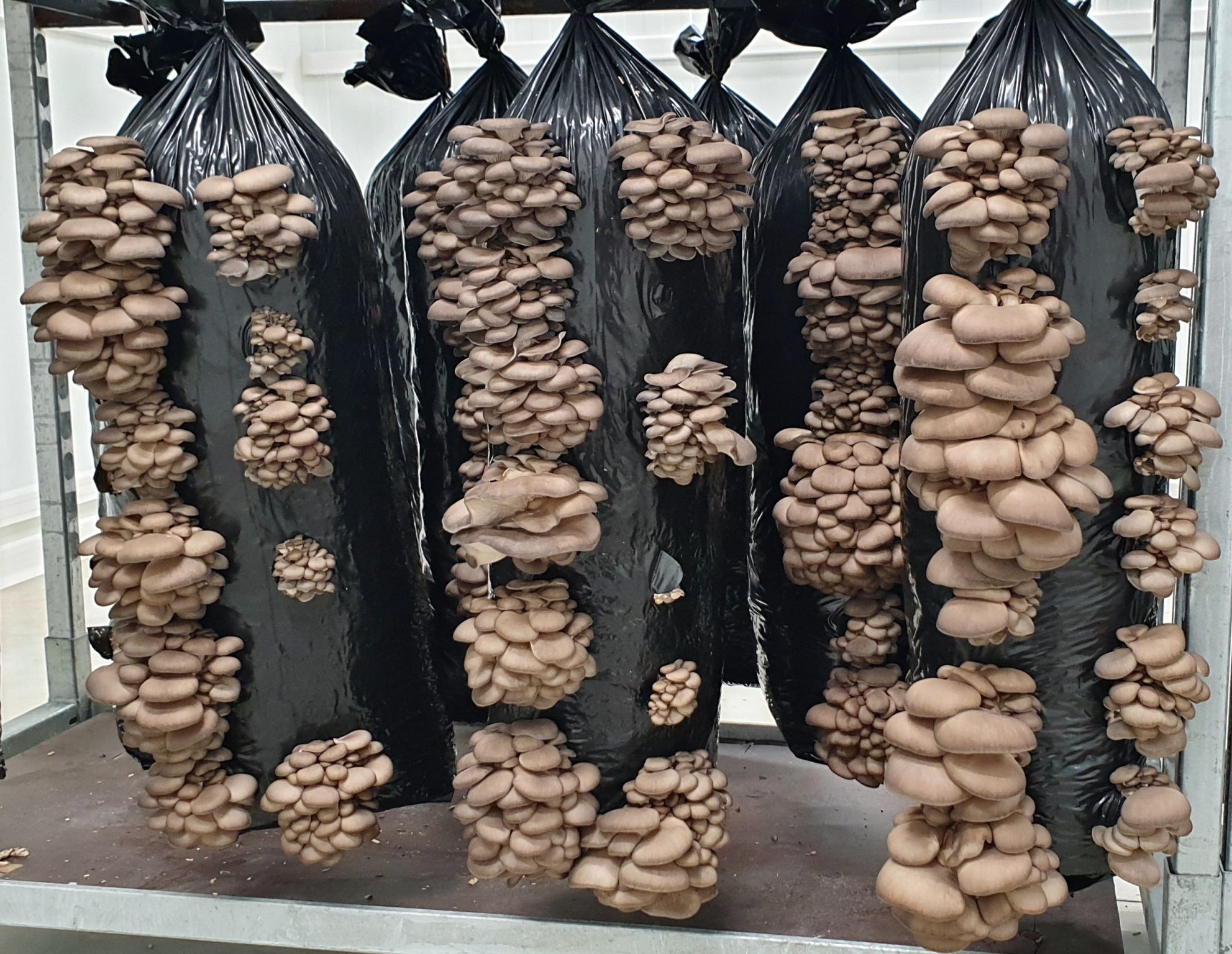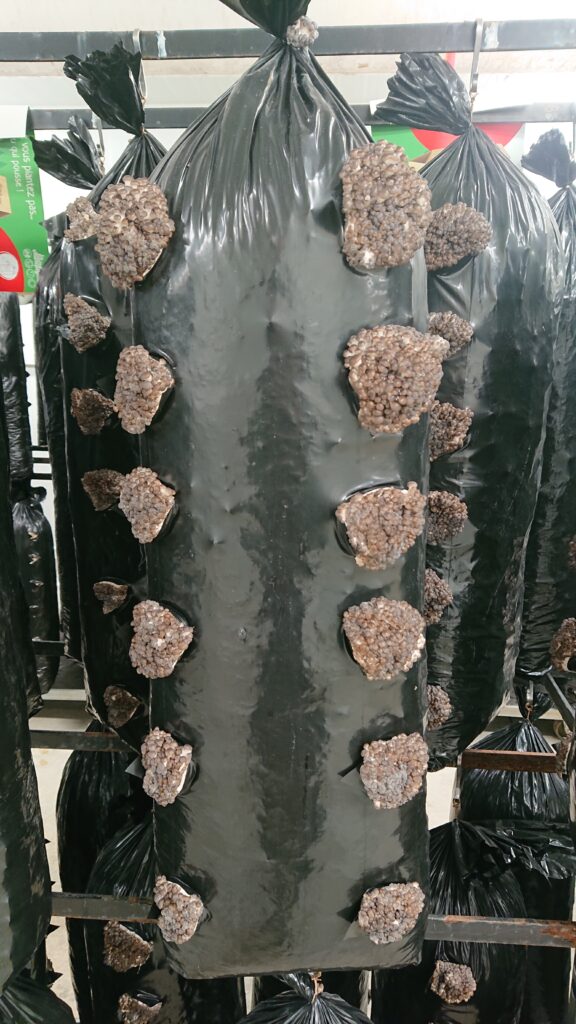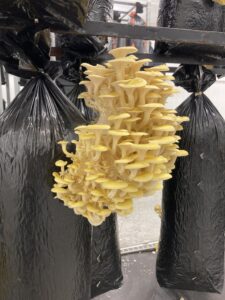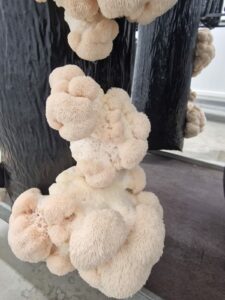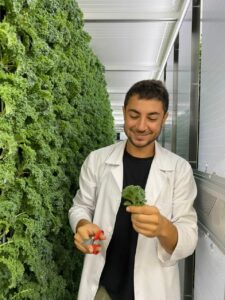
We invite you to explore the intricacies of mushroom cultivation with Kroptek, your reliable partner in sustainable farming.
Join us as we unveil the step-by-step process of growing mushrooms from the moment you acquire our bags to the gratifying harvest.
At Kroptek, we are fortunate to have Edwin, our knowledgeable expert in agriculture. Edwin plays a vital role in unraveling the nuances of turning a bag of mushrooms into a thriving harvest.
Nurturing Life from Organic Materials
Our process begins with the collection of used coffee grounds and the additions of lignocellulosic materials – live organic matter, wood chips, hay, and hemp. These materials are pasteurized, combined with water, and heated to 80°C, eliminating unwanted bacteria. This careful preparation lays the foundation for a successful harvest.

Incubation: The Emergence of Mycelium
Edwin introduces spores (the seeds of mushrooms) into the mix. After an incubation period of four weeks, witness the transformative moment when the bag turns white – an indication of the thriving mycelium within.
Air Exchange: A Crucial Stage for Growth
For clients receiving incubated bags, Edwin recommends a precise process. Cut six slits, 6×6, on each side of the bag, creating 8-10 cm V-shaped openings. This allows for air exchange, triggering the mushrooms to commence their growth.
From Pinning to Harvest
One week after the air exchange, observe the emergence of pinning – the stage where baby mushrooms appear in clusters. Two weeks post-pinning, you’ll be greeted with a full-grown mushroom ready for harvest. Edwin underscores the importance of thermal shock during the air exchange, a crucial element in the growing process.
Two Strong Harvest Yields
After two weeks and your first harvest, a second harvest is possible (at 5% less yield than the first). However, Edwin advises against a third harvest. Following the second harvest, responsibly dispose of the bags or utilize the leftover substrate as a nutrient-rich soil restructuring material for farmers.
Kroptek’s Commitment to Quality
For those aiming for continuous production, simply restart the process. Kroptek offers incubated bags, ensuring a seamless experience for growers. Whether you choose to purchase incubated or non-incubated bags depends on your preferences and available resources. Edwin suggests assessing your specific grow room needs and the availability of an incubation room – a dark space that mushrooms favor during their growth phase. To learn more, talk to one of our specialists here at Kroptek and embark on your mushroom cultivation journey now!
Different Types of Mushrooms Grown
Grow Room at La Boîte à Champignons
